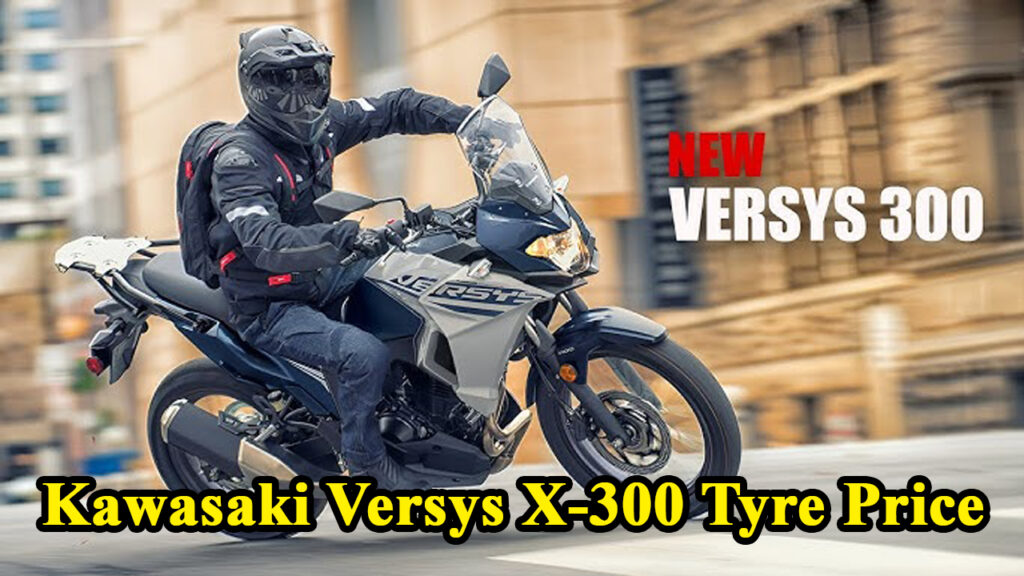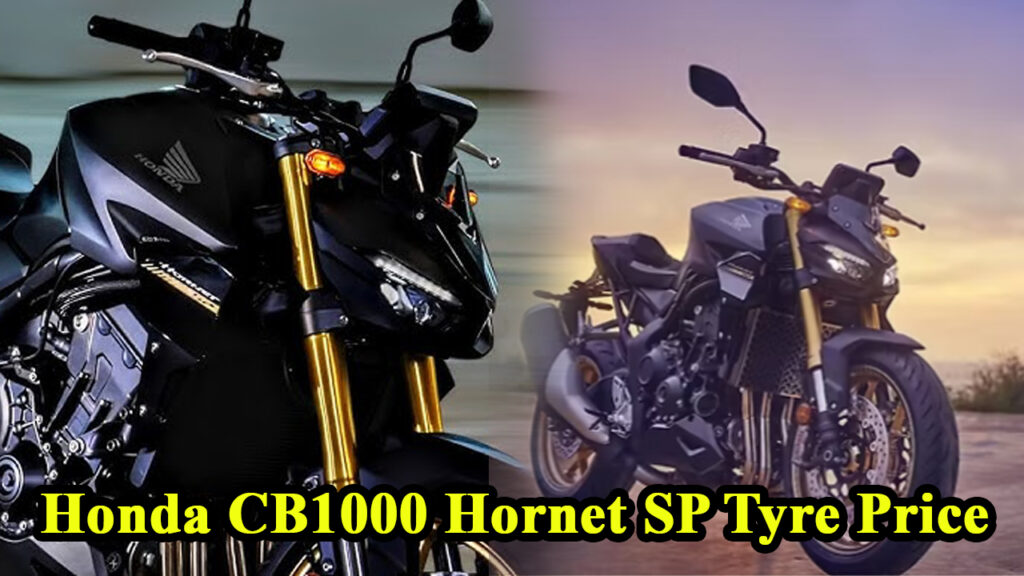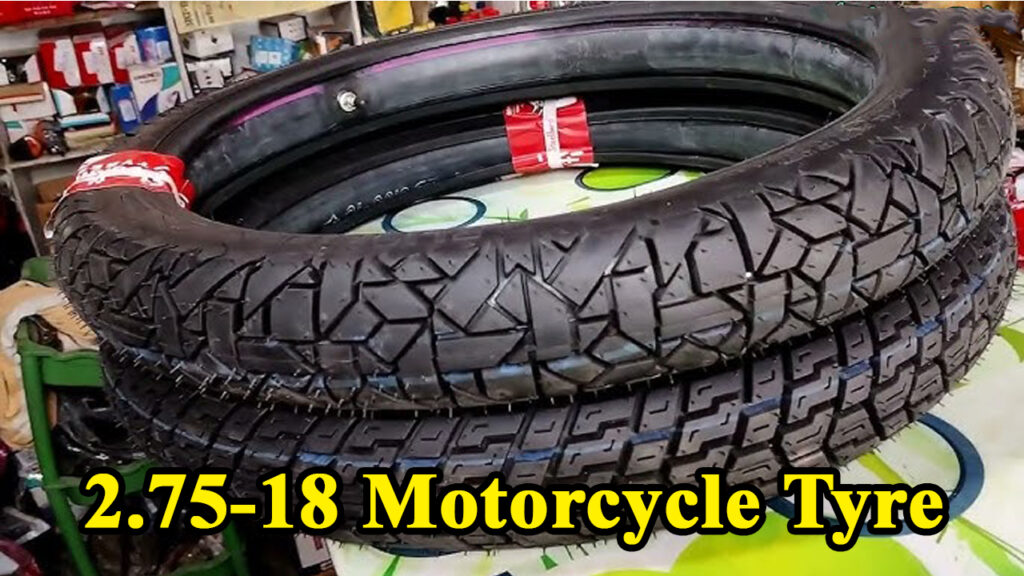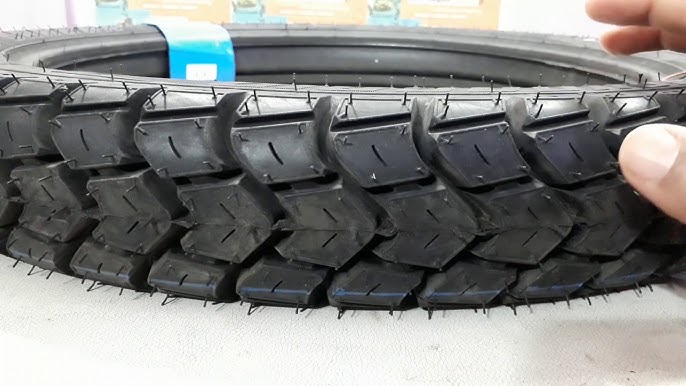As a passionate rider who’s spent countless hours chasing horizons on two wheels, I can tell you that few components are as critical to your motorcycle’s performance, safety, and overall riding experience as its tyres. For owners of the nimble and adventurous Kawasaki Versys X-300, understanding tyre choices and their associated costs is paramount. This isn’t just about finding the cheapest rubber; it’s about making an informed decision that enhances your journey, whether you’re commuting through city traffic or exploring the less-trodden paths that call to the adventure touring spirit.
In this comprehensive guide, we’ll delve deep into the world of Kawasaki Versys X-300 tyres in India, exploring everything from what makes a good adventure tyre to specific price ranges, buying options, and essential maintenance tips. So, let’s roll up our sleeves and get into the specifics!
Why Tyres are the Unsung Heroes of Your Versys X-300
The Kawasaki Versys X-300, with its comfortable ergonomics, tractable engine, and capable chassis, is designed for versatility. It’s equally at home on a smooth highway cruise as it is tackling a broken stretch of tarmac or a gravel trail leading to a hidden gem. This dual-sport nature means your tyres need to be equally versatile.
KTM RC 200 Tyre Price India: Get the Best Value for Your Ride
Think about it: your tyres are the sole point of contact between your 179 kg adventure machine and the diverse Indian terrain. They influence:
- Grip and Traction: Essential for confident braking, acceleration, and cornering, regardless of surface.
- Safety: The right tyres significantly reduce the risk of skidding, punctures, and loss of control.
- Comfort: Good tyres absorb road imperfections, contributing to a smoother and less fatiguing ride, especially on long journeys.
- Fuel Efficiency: Optimized rolling resistance can marginally impact your bike’s mileage.
- Handling: The profile and compound of your tyres directly affect how your Versys X-300 leans into corners and responds to steering inputs.
Neglecting your tyres is like wearing worn-out shoes for a marathon – it’s a recipe for discomfort and potential disaster.
Deciphering Tyre Prices: What Drives the Cost?
Before we dive into specific figures, it’s crucial to understand the factors that influence the price tag of a Kawasaki Versys X-300 tyre. It’s a blend of engineering, material science, and market dynamics:
-
Brand Pedigree:
- Premium Brands (e.g., Metzeler, Pirelli, Michelin): These are the stalwarts of the tyre world, known for their cutting-edge technology, superior compounds, and extensive R&D. They often offer unmatched grip, longevity, and performance, but come with a higher price. Think of them as the five-star hotels of the tyre industry.
- Mid-Range Brands (e.g., MRF, Apollo, CEAT – their premium offerings): Indian manufacturers have significantly upped their game, providing excellent value for money. They offer reliable performance for most riding conditions and are a popular choice for daily riders and tourers alike.
- Budget-Friendly Options: While tempting due to their low cost, these might compromise on grip, longevity, and wet-weather performance. Exercise caution and thoroughly research user reviews before opting for these.
-
Tyre Type & Tread Pattern:
- Road-Biased (e.g., Michelin Pilot Street): Designed primarily for asphalt, offering excellent grip on dry and wet roads, typically with a smoother tread pattern. Generally less expensive.
- 50/50 Dual-Sport (e.g., Metzeler Tourance, Michelin Anakee Adventure, Pirelli Scorpion Rally STR): These are the sweet spot for the Versys X-300, balancing on-road performance with decent off-road capability. Their tread patterns are more aggressive than pure road tyres but not as knobby as off-road ones. This versatility usually translates to a mid to high price point.
- Off-Road Biased (e.g., Metzeler Karoo series): Featuring aggressive knobby treads for maximum grip on dirt, mud, and gravel. While excellent off-road, they wear faster and can be noisy on asphalt. Often among the most expensive.
-
Tyre Size: The Versys X-300 uses specific sizes:
- Front: 100/90-19
- Rear: 130/80-17 These are relatively common adventure bike sizes, but the larger diameter of the front wheel (19-inch) and specific aspect ratios mean they are generally more expensive than smaller commuter bike tyres.
-
Compound Technology: The rubber compound dictates grip, wear, and heat dissipation. Softer compounds offer better grip (especially in corners) but wear out faster. Harder compounds last longer but might compromise on ultimate grip. Advanced multi-compound technologies, where different rubber mixes are used across the tyre’s profile, are a hallmark of premium tyres and contribute to their cost.
-
Tubeless vs. Tube-Type: While the Versys X-300 typically runs tubeless tyres on its spoked rims (which might require specific rim strips/seals), tubeless tyres generally offer better safety in case of a puncture (slow leak instead of a sudden deflation) and are easier to repair on the go. They might be slightly pricier than their tube-type counterparts.
-
Availability and Import Duties: The Indian market sees fluctuations in tyre availability, especially for imported premium brands. Import duties and logistics costs can significantly inflate prices compared to locally manufactured tyres.
Suzuki e-Access Tyre Price in India: An In-Depth Buyer’s Guide
Kawasaki Versys X-300 Tyre Price Guide: Expected Ranges in India (As of Early 2025)
Please note that these are estimated price ranges and can vary based on the dealer, city (e.g., Mumbai vs. tier-2 cities like Nashik), ongoing offers, and the exact model/variant of the tyre.
- Metzeler Tourance / Karoo Street: ₹16,500 – ₹19,500 | ₹18,000 – ₹21,500
- Pirelli Scorpion Rally STR / MT60: ₹17,500 – ₹20,000 | ₹19,000 – ₹22,000
- Michelin Anakee Adventure: ₹19,500 – ₹21,000 | (Rear often similar range, less common in this exact size but alternatives exist)
Mid-Range Segment (Balanced Performance) | Mid-Range Segment (Balanced Performance)
- MRF MoGrip Meteor / Zapper FS: ₹2,800 – ₹4,500 | ₹3,800 – ₹5,000
- Apollo Tramplr Xr / Actigrip R1: ₹3,000 – ₹4,000 | ₹2,000 – ₹3,500 (Note: Apollo Actigrip R1 100/90-17 is a common commuter size, the 130/80-17 might be slightly higher).
- CEAT Gripp XL / Zoom X3 (relevant sizes): ₹1,900 – ₹3,500 | ₹2,500 – ₹4,000
Budget Segment | Budget Segment
- Local/Less known brands: ₹1,500 – ₹2,500 | ₹1,800 – ₹3,000 (Caution advised for long tours or aggressive riding)
Important Value Point: While you might see some very low prices for certain tyre models online, always verify the manufacturing date (DOT code). Tyres have a shelf life, and older stock might be cheaper but offer degraded performance and safety. A general rule of thumb is to avoid tyres older than 2-3 years, even if unused.
Finding the Best Value: More Than Just the Price Tag
This is where the “expert who deeply understands the subject” comes in, and my personal experience truly resonates. When I was looking for a replacement set for my own adventure bike, I was tempted by a seemingly fantastic deal on a lesser-known brand. The price was undeniably attractive. However, after talking to a seasoned mechanic in Chennai, who has seen countless bikes come through his workshop with various tyre-related woes, he advised me against it. “Saar,” he said, in his typical straightforward manner, “tyres are your life. Don’t compromise on that. A cheap tyre might save you a thousand rupees today, but it could cost you ten times that in repairs, or worse, your health, tomorrow.”
His words struck a chord, and I ended up investing in a set of Metzeler Tourance. The initial pinch in my wallet was quickly forgotten on my next long ride through the Western Ghats. The confidence these tyres instilled, especially when I hit an unexpected patch of gravel on a hairpin bend, was priceless. They gripped consistently, cornered predictably, and soaked up bad roads with aplomb. They also lasted me a good 20,000 km, making the per-kilometer cost highly competitive with cheaper alternatives that might have needed replacement far sooner.
Here’s what to consider for true value:
- Longevity vs. Initial Cost: A premium tyre that lasts 15,000-20,000 km might be more economical than a budget tyre that only manages 8,000-10,000 km, despite its lower upfront price. Calculate the cost per kilometer.
- Performance Metrics:
- Wet Grip: Crucial for Indian monsoon conditions. A tyre with excellent wet grip can literally be a lifesaver.
- Dry Grip and Handling: For spirited riding and confident highway cruising.
- Off-Road Capability: If your Versys X-300 sees a lot of dirt, prioritize tyres with more aggressive patterns.
- Comfort and Noise: Some tyres can be noisy, especially knobby ones, which can be irritating on long highway stretches.
- Warranty and After-Sales Support: Reputable brands and authorized dealers often provide warranties against manufacturing defects, offering peace of mind.
Where to Buy Your Versys X-300 Tyres in India
The Indian market offers several avenues, each with its pros and cons:
-
Authorized Kawasaki Service Centers:
- Pros: Guaranteed genuine parts, expert fitment by trained technicians, often includes balancing. Convenient if you’re already there for service.
- Cons: Generally the most expensive option due to overheads and brand margins. Limited choice of brands (usually only what Kawasaki officially supplies or recommends).
-
Multi-Brand Tyre Dealers (Local Tyre Shops):
- Pros: Wide variety of brands and models, competitive pricing (you can often negotiate), immediate fitment, and personalized advice from experienced staff. They are more likely to stock popular Indian and international brands.
- Cons: Quality of balancing and fitment can vary, so choose a reputable shop.
Example: In Bangalore, a city I frequent, there are numerous multi-brand tyre shops along major roads. One particular shop near Indiranagar, run by an older gentleman who’s been in the business for decades, is a local favorite. He not only gives you a fair price but also shares insights on tyre performance based on actual rider feedback, which is invaluable. He once guided a friend towards a specific MRF model for his Versys X-300, emphasizing its durability for daily city commutes while still being capable of weekend getaways, and my friend swears by that recommendation to this day.
-
Online Platforms (e.g., TyrePlex, TyreTitans, Flipkart, Amazon):
- Pros: Often the most competitive prices, especially during sales, and a vast selection. Convenience of doorstep delivery.
- Cons: You’ll need to find a local mechanic for fitment and balancing, which adds to the overall cost and hassle. Risk of receiving older stock (check DOT codes rigorously). No physical inspection before purchase. Returns can be cumbersome.
Case Study: A friend of mine, tech-savvy and always looking for a deal, once bought a set of premium adventure tyres for his Versys X-300 from a major online retailer during a festive sale. He saved about ₹2,500 compared to his local dealer. However, when he took them for fitment, the mechanic noticed the DOT code indicated the tyres were nearly 3.5 years old. While technically “new” (unused), the rubber compound had already begun to age. He decided to keep them, but the experience highlighted the importance of checking manufacturing dates when buying online. He admitted that the initial saving felt less significant when he considered the peace of mind he might have forfeited.
Activa 3G Tyre Price: Your Complete Guide to Smart Choices
Installation and Maintenance: Protecting Your Investment
Buying the right tyre is only half the battle. Proper installation and diligent maintenance are crucial for maximizing their lifespan and ensuring your safety:
- Professional Installation & Balancing: Always get your new tyres installed by a professional. Improper mounting can lead to vibrations, premature wear, and unsafe riding. Balancing ensures even weight distribution, reducing wobble and improving stability, especially at higher speeds.
- Tyre Pressure is King: Regularly check your tyre pressure (at least once a week, and before every long ride) using a reliable gauge. Incorrect pressure leads to uneven wear, reduced grip, and decreased fuel efficiency. The recommended pressures for the Versys X-300 are usually found on a sticker near the swingarm or in the owner’s manual.
- Tread Wear Monitoring: Keep an eye on the tread wear indicators (small bars within the grooves). Once the tread wears down to these indicators, it’s time for a replacement. Worn-out tyres significantly compromise grip and safety.
- Alignment (if suspected): If you notice uneven wear patterns despite correct pressure, it might indicate an alignment issue with your bike’s chassis, which a service center can diagnose.
Important Values and Originality: The Human Element in Tyre Choice
Choosing tyres isn’t just a transactional decision; it’s a personal one. For an adventure tourer like the Versys X-300, your tyres are your companions on daring escapades and daily commutes. My suggestion, as someone who rides and deeply values the riding experience, is to prioritize safety and confidence above all else.
While pinching pennies might seem smart in the short term, the value of knowing your tyres will perform optimally in an emergency, or provide unflappable grip on a challenging mountain road, is immeasurable. There’s a certain joy in riding a bike that feels planted and responsive, and a significant portion of that comes from the quality of the rubber you’re running. Don’t let a minor cost difference sway you from a tyre that genuinely enhances your riding.
Conclusion: Ride Smart, Ride Safe
The Kawasaki Versys X-300 is an exceptional adventure motorcycle, and giving it the right set of tyres is an investment in both your bike’s longevity and your personal safety and enjoyment. While prices for Versys X-300 tyres in India can range from a budget-friendly ₹1,500 to a premium ₹22,000+ per tyre, an informed decision involves looking beyond the sticker price. Consider the brand’s reputation, the tyre’s intended use (road, 50/50, off-road), its performance characteristics, and the longevity it offers.
Whether you opt for a tried-and-tested Metzeler Tourance for its all-round prowess, a sturdy MRF for reliable everyday use, or a grippy Pirelli for aggressive touring, remember to prioritize quality fitment and consistent maintenance. Because at the end of the day, when you’re out on the open road, it’s the humble patch of rubber beneath you that truly connects you to the adventure.
Frequently Asked Questions (FAQs)
Q1: What are the exact tyre sizes for the Kawasaki Versys X-300?
A1: The front tyre size is 100/90-19 and the rear tyre size is 130/80-17.
Q2: Can I use tubeless tyres on my Versys X-300’s spoked rims?
A2: Yes, the Versys X-300 typically comes with tubeless-ready spoked rims from the factory, often utilizing rim strips or seals to hold air. Always confirm with your dealer or a tyre expert.
Q3: How often should I replace my Versys X-300 tyres?
A3: Tyre lifespan depends on riding style, road conditions, and tyre compound. Generally, expect them to last between 10,000 km to 25,000 km. Always replace them if the tread wear indicators are visible, if there are significant cracks, or if the tyre is damaged, regardless of mileage.
Q4: Is it worth spending more on premium tyres for the Versys X-300?
A4: For an adventure touring bike like the Versys X-300, investing in premium or good mid-range tyres is highly recommended. They offer superior grip, better performance in varied conditions (especially wet), longer lifespan, and significantly enhance safety and riding confidence. The initial higher cost is often justified by these benefits.
Q5: Should I buy tyres online or from a local dealer in India?
A5: Online purchases can offer better prices and variety but require you to arrange for fitment and carefully check manufacturing dates. Local dealers might be slightly pricier but provide immediate installation, expert advice, and better after-sales support. For most riders, a reputable local multi-brand tyre dealer offers the best balance of price, service, and convenience.




